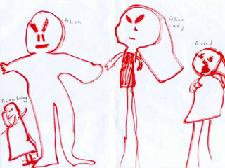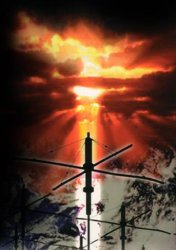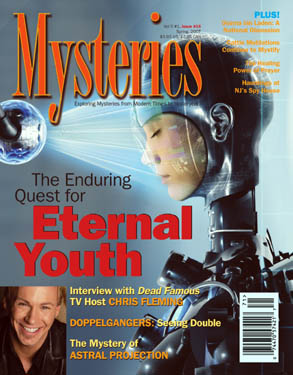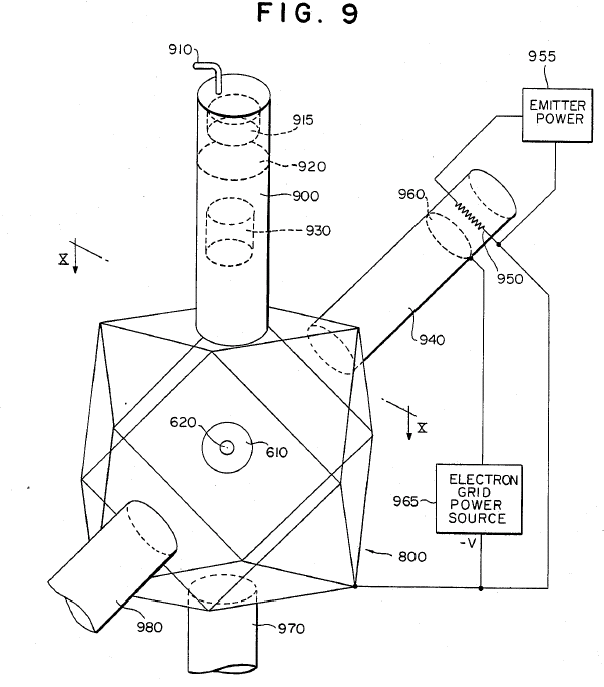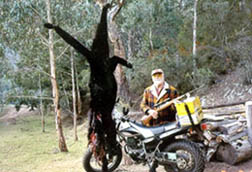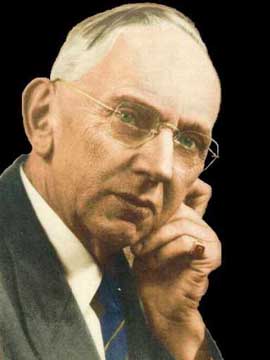On Nov. 11, 2005, the day his
small fusion reactor exploded in a shower of sparks and metal
fragments, even physicist Robert Bussard didn’t know what he had
achieved.
For 11 years, the U.S. Navy quietly funded Bussard’s research. It was a
small project with a very large goal: deriving usable energy from
controlled nuclear fusion.
Funding ran out at the end of 2005 and Bussard was supposed to spend
the tail end of the year shutting down his lab. He kept postponing that
in an effort to finish a final set of experiments.
He completed low-power tests in September and October and began
high-power testing of the reactor in November. After four tests Nov. 9
and 10, an electromagnetic coil short-circuited as electricity surged
through it, “vaporizing” part of his reactor, Bussard said, and
bringing his tests to an end.
“The following Monday, we started to tear the lab down. Nobody had time
to reduce the data that was stored on the computer. It wasn’t until
early December that we reduced the data and looked at it and realized
what we had done,” he said.
Bussard said he and his small team of scientists had proven that
nuclear fusion can be harnessed as a usable source of cheap, clean
energy.
But for more than a year now, Bussard has been unable to move to the
next step in his research. At 78, he is in ill health and his
scientific allies fear that the long-sought breakthrough he appears to
have achieved may fade into obscurity before it can be fully developed.
No small part of the problem is that the U.S. Energy Department has a
competing project, and has spent five decades and $18 billion on an
as-yet-unsuccessful effort to solve the fusion puzzle.
“Who would believe that a tiny company based on one person could solve
the riddle that has escaped literally thousands of researchers?” asked
Don Gay, a former Navy electronics engineer and an early “technical
point of contact” in the Office of Naval Research who helped keep
Bussard’s project alive.
But that, Gay and others insist, is what Robert Bussard has done.
Bussard is not a household name, except possibly to “Star Trek” fans.
In 1960, he developed — on paper — the Bussard ramjet, an engine
designed to power space vehicles by collecting hydrogen atoms from the
near-vacuum of space and feeding them into a fusion reactor.
His idea was the basis for the “Bussard collectors” that powered the
fictional space ships in the 1960s television series “Star Trek.”
A decade later, Bussard served as assistant director of the
Thermonuclear Reaction Division of the now defunct U.S. Atomic Energy
Commission. He also worked for U.S. government nuclear laboratories at
Los Alamos, N.M., and Oak Ridge, Tenn., and for TRW Systems.
Along the way, Bussard founded his own small company, Energy Matter
Conversion Corp. — EMC2 — to pursue research into fusion. Bussard aims
to use fusion to produce cheap, inexhaustible, clean energy. Unlike
other forms of nuclear energy, including other methods of fusion,
Bussard’s process does not produce radioactivity.
His fuel of choice is one of the earth’s most common and least exotic
elements: boron.
It can be scooped from the Mojave Desert in California, possibly even
extracted from sea water. Boron is used in the production of hundreds
of products as diverse as flame retardants, electronic flat panel
displays and eye drops.
It’s so common that no country, company or individual could corner the
market on the fuel supply, Gay said.
The process Bussard hopes to perfect would use boron-11, the most
common form of the element. Bussard says his experiments — which
achieved fusion with deuterium, not boron — in November 2005 proved
that the boron process will work.
The boron reactor would be similar to, but more powerful than, the
reactor that blew up in 2005.
Bussard’s reactor design is built upon six shiny metal rings joined to
form a cube — one ring per side. Each ring, about a yard in diameter,
contain copper wires wound into an electromagnet.
The reactor operates inside a vacuum chamber.
When energized, the cube of electromagnets creates a magnetic sphere
into which electrons are injected. The magnetic field squeezes the
electrons into a dense ball at the reactor’s core, creating a highly
negatively charged area.
To begin the reaction, boron-11 nuclei and protons are injected into
the cube. Because of their positive charge, they accelerate to the
center of the electron ball. Most of them sail through the center of
the core and on toward the opposite side of the reactor. But the
negative charge of the electron ball pulls them back to the center. The
process repeats, perhaps thousands of times, until the boron nucleus
and a proton collide with enough force to fuse.
That fusion turns boron-11 into highly energetic carbon-12, which
promptly splits into a helium nucleus and a beryllium nucleus. The
beryllium then splits into two more helium nuclei.
The result is “three helium nuclei, each having almost three million
electron volts of energy,” according to Gay, who has written a paper
explaining Bussard’s research in layman’s terms.
The force of splitting flings the helium nuclei out from the center of
the reactor toward an electrical grid, where their energy would force
electrons to flow — electricity.
This direct conversion process is extraordinarily efficient. About 95
percent of the fission energy is turned into electricity, Gay said.
For years, Bussard had wrestled with a problem: too many electrons were
somehow escaping from his reactor core. That meant too few fusion
reactions to result in a net positive output of power.
“We never quite figured it out until the spring of 2005,” Bussard said.
Then, during tests of a reactor, he suddenly understood the problem.
The magnetic field used to create the electron ball at the core of
Bussard’s reactor core was directing some electrons into the metal
walls of the electromagnetic coil containers and support structures.
It was an “obvious point that we had all missed for over a decade of
working on this,” Bussard said.
It meant he had to design and build a new reactor.
With funds running out, “we banged it together as quickly as we could,”
and began testing in September. Instantly, Bussard saw “impressive and
startling results.” Later analysis would show that the rate of fusion
was 100,000 times higher than in previous tests.
“We got four tests out of it that showed conclusively that we had
solved the electron loss problem,” he said.
That ended on Nov. 11, when the short circuit “blew the machine apart,”
Bussard said.
But Bussard is convinced he had built a reactor that could produce more
power than it would consume, and had found a way, at long last, to
harness fusion as an energy source. That hasn’t persuaded the Navy to
resume funding.
The physics of Bussard’s process is daunting.
“There are only about five people in the United States who understand
this well enough to comment on it,” Bussard said.
When the physicist and his allies asked the Navy to resume funding last
August, top Navy scientists turned for advice to the Department of
Energy, a senior Navy scientist recounted. “There were people in DoE
labs who wrote papers that said this couldn’t possibly work.”
Bussard and his allies are convinced the Energy Department is intent on
stifling any fusion projects that could rival its own.
Bussard provided the Navy a stack of papers explaining his work. Navy
officials “looked at them — not very closely,” the scientist said, and
then had a day-long meeting with Bussard. In the end, the Navy decided
not to support him, the scientist said.
Weeks later, Bussard’s work won the 2006 outstanding technology of the
year award from the International Academy of Science. The academy
called his fusion reactor “a revolutionary radiation-free fusion
process that could change the world as we know it today.”
“Could” is a key word.
Bussard may have proven that his process can use controlled fusion to
produce more energy than it consumes, but he did not achieve sustained
fusion or non-radioactive fusion, nor did he actually produce usable
electricity.
That will require more time and more money, he said.
“From the beginning, we were always funded at one-eighth or one-tenth
of what we really needed,” Bussard said.
As a result, Bussard built tiny reactors. And because his reactors were
small and his money was limited, Bussard had neither space nor funds to
build cooling systems. Instead, to keep his equipment from overheating,
he conducted his experiments using brief bursts of electricity to power
the electromagnets at the heart of his reactors.
Tests lasted “fractions of milliseconds,” according to Gay. But
actually, that’s “a long time from a nuclear perspective,” he said.
Also because of power constraints, Bussard conducted his experiments by
fusing deuterium rather than his preferred boron-11. Unlike boron,
deuterium fusion produces neutron radiation.
Bussard explained his choice: “You need a lot of energy to cause
fusion.” The requirement for “boron fusion is very large — 200,000
volts. Deuterium takes a tenth that much.”
Given the physical limitations of his small reactors and the fiscal
limitations of his budget, “It’s much easier to work with deuterium,”
Bussard said.
Now that he has shown that controlled deuterium fusion is possible, it
is simply a matter of building bigger reactors with bigger power
supplies and cooling systems to demonstrate sustained boron fusion, he
said.
Bussard said his next step is to build a new reactor to replace the one
destroyed in 2005. Ideally, he’d like to build two and use them to
demonstrate to other scientists beyond doubt that his process works.
For that, he says he needs about $2 million.
To build a full-size reactor, Bussard said he needs about $200 million.
“We’ve solved the physics; now it’s time for engineering development,”
Bussard said.
That means developing special reactor hardware, such as high-voltage
power supplies, special transformers and switches that work in
timeframes of sub-milliseconds. Some of that work may be challenging,
“but you don’t have to discover new things,” Bussard said.
For now, a source of money seems to be the hardest thing to find.
Despite repeated appeals by Bussard, Gay and others, the Navy has
declined to continue funding Bussard’s research.
“We tried going to ONR [the Office of Naval Research], but we ran into
a brick wall,” said Larry Triola, a former deputy chief scientist in
the Navy program executive’s office for surface combatants.
During the 1990s, Triola and his bosses hoped that Bussard’s fusion
process could be turned into a revolutionary ship-propulsion system.
“I believe he has demonstrated that it will work,” Triola said. But, he
stressed, that is his personal opinion, not the Navy’s. Convincing
others has not been easy.
“There’s a giggle factor” about Bussard’s process “because of all the
decades the Department of Energy has pushed billions of dollars” into
building fusion reactors the size of small factories that consume vast
amounts of energy, but have yet to produce any, he said.
“They’re never going to make a useful power device for the Navy,”
Triola said. “We need something that will fit on an aircraft carrier.
We would like to put them in submarines and on destroyers. Everything
says we should be able to do that with Bussard’s.”
But the money people aren’t convinced.
“People either don’t believe you or they say, ‘It’s not my mission,’”
Triola said. “The money we’re talking about is spent in an hour or two
in Iraq.”
The Navy spent a total of $14 million during the years it supported
Bussard’s work, said Navy spokesman Jim Boyle.
The decision to stop funding came after careful evaluation, he said.
But Boyle said he did not know what the “evaluation criteria” were or
why the Navy reached the decision it did.
Bussard’s work should be funded, agreed Frank Shoup, director of the
systems engineering institute at the Naval Postgraduate School.
“I’m not an expert” in fusion physics, Shoup conceded, but he has
followed Bussard’s work.
“It relies on a new principle in developing fusion energy,” he said.
“The fuel is totally abundant and cheap, there are no noxious
byproducts like radioactive waste, it doesn’t produce carbon and it
doesn’t pollute.
“The quick answer is, if it works, the payoff is so large it is worth
funding to find out if it works,” he said.
Bussard is getting discouraged.
“The [U.S.] government, I don’t think, is going to do anything,” he
said.
So he has begun to look elsewhere. Last October he published a paper
detailing his work for the 57th International Aeronautical Congress in
Valencia, Spain. In it he named eight countries, including China,
India, Russia and Venezuela, that “could logically develop interest” in
his research.
In November, Bussard presented his work in a 90-minute lecture at the
headquarters of the Internet search engine Google.
The lecture is archived at
http://video.google.com/videoplay?docid=1996321846673788606 and had
been viewed 87,700 times by early March.
The lecture generated a lot of e-mail, but so far, no funding, Bussard
said. His next effort may be a book-length publication detailing his
fusion work.
Much as supporters Gay and Triola want to see Bussard’s fusion work
resume, they worry about the broadening appeal for funding.
“My concern is China,” Gay said. “If they have more vision than we do,
they could jump on it.”
Triola shares the worry. “I think it’s a matter of engineering now, not
physics any more. Once Bussard gets enough publicity, one of our
not-so-friendly allies, probably the Chinese, will go do it.”
Source: Defense News
http://www.defensenews.com/story.php?F=2584496&C=america
-
PRESS RELEASE DEPARTMENT -
UFO Crawler Powered by IBM
OmniFind Yahoo!
Edition Searches for Flying
Saucers, Ghosts and other Mysteries
SAN FRANCISCO, March 9, 2007 -- The Anomalies Network today unveiled
the UFOCrawler, one the first of a new breed of search engines
specifically tuned to search for information about the paranormal and
unexplained.
UFOCrawler (
www.ufocrawler.com)
was developed to make it easier to conduct advanced research and tap
information and knowledge sources worldwide to form educated opinions
about topics such as UFO Sightings, time travel, conspiracy theories
and anomalies.
Powered by IBM OmniFind Yahoo! Edition enterprise search software,
UFOCrawler helps users precisely target and gather information from
relevant sources, including thousands of documents and files collected
in the vast Anomalies Network archive, as well as multiple global
resources across the Web on topics such as such as ghosts, conspiracy
theories and extraterrestrials. Previously, using a conventional Web
search engine, a search on a term such as Area 51, for example--would
return thousands of irrelevant and inaccurate results.
UFOCrawler helps users more clearly define and target their search to a
particular topic, for instance to search for information about an
aurora sighted over Area 51. UFOCrawler is tuned to search for and
deliver the specific information requested or refine an area of
interest.
"Only through raw information can people form their own opinions about
what is happening out there," said Olav Phillips, founder, the
Anomalies Network. "The questions about the paranormal are some of the
most fundamental questions of humanity. People can't draw conclusions,
make a decision or form an opinion based on a single sighting or event.
UFOCrawler is designed to give users a more holistic view of all the
information sources they need to decide for themselves."
In addition to launching UFOCrawler today, The Anomalies Network is
also introducing numerous site enhancements to enable better
collaboration among users as well as major performance enhancements to
the site.
The site enhancements includes all new content and features to enable
more users to contribute, collaborate and dynamically share information
based on their interests. A new user-driven search and RSS
subscriptions as well as account access also enable users to customize
and view only information of interest to them. The site is also
undergoing major performance improvements including the deployment of
the NetliOne Platform for global site caching powered by Netli, as well
as further network improvements at their state of the art datacenter
hosted by Silicon Valley Web Hosting.
In existence for more than 10 years, the Anomalies Network is the
world's largest online UFO and paranormal community with over a million
pageviews per month. The site is designed to serve as a super archive
to make the location of related information easier. Built almost
entirely on open source software, the Anomalies Network uses the CentOS
Linux distribution, Apache, Tomcat, MySQL and PHP in addition to IBM
OmniFind Yahoo! Edition.
IBM OmniFind Yahoo! Edition is a no-cost, entry level enterprise search
product with Web search services powered by Yahoo! that enables
departments and businesses of all sizes to quickly and easily find,
access and capitalize on information stored within organizations and
across the Web.
About The Anomalies Network
The Anomalies Network (
http://www.anomalies.net)
is the world's largest online UFO/Paranormal Community. Originally
formed as the S4 Database more then 10 years ago, The Anomalies
Network, was created to improve the quality of information about UFOs
and the paranormal on the Web. The site provides the world's largest
collection of information about the paranormal, enabling users to
research, contribute information and collaborate with others via forums
and chat.
-
ALTERNATIVE THEORIES DEPARTMENT -
Author Mac Tonnies Makes a Case
for "Cryptoterrestrials"

Betty and Barney Hill were driving from Montreal to New Hampshire on
Sept. 19, 1961, when they claim they were taken aboard a UFO. After
medical exams and verbal interaction, the Hill’s were returned to their
car.
If their story is true, did space aliens abduct the Hills in one of the
most famous UFO cases? Maybe not.
Kansas City writer Mac Tonnies isn’t convinced contact with a UFO has
anything to do with extraterrestrials. Tonnies, author of “After the
Martian Apocalypse,” said if UFOs and their crews exist, they may have
come from right here on Earth.
Tonnies calls them cryptoterrestrials; and he’s writing a book about
them.
“It’s not so much a theory as a hypothesis. It’s a paradigm I suppose,”
Tonnies said. “It’s basically asking why not?”
The government, scientists, and Edward J. Ruppelt – head of the 1950s
Air Force project investigating flying saucers – have all said most UFO
cases are pedestrian. Most. Not all.
“In the conventional wisdom (UFOs) are explainable through atmospheric
effects or psychology,” Tonnies said. “If the real ones exist, it’s
alien spacecraft coming from another star system. I think we’re jumping
the gun on that. The evidence doesn’t support it.”
For evidence, Tonnies looks at the descriptions of UFO occupants,
folklore and the evolution of UFO technology.
“We have these beings with larger than normal slanted eyes, small noses
and mouths,” he said. “They typically lack hair … and have long fingers
– weirdly enough – and long arms. And behavior is often descried in a
way that they might be nocturnal.
“I wonder if this is a species that lives underground. Not that they
evolved underground. If they’re real, they’re obviously an offshoot of
people who went down an evolutionary fork in the road.”
All cultures have their stories of little people and usually these
creatures – elves, fairies, trolls and dwarves – live underground. But
maybe these stories are more than myth.
Scientists found the remains of miniature humans (dubbed Hobbits) in a
cave on Flores Island near Indonesia in 2004. The islanders have
legends of little people who ate the islander’s food and stole their
children. Tribesmen eventually exterminated them.
“Humans lived side-by-side among a diminutive race and we have proof,”
Tonnies said, although he has testimony of his own. “I actually spoke
to a witness who had a face-to-face encounter with small humanoids in
Oregon. They said some interesting things, very cryptic. They were very
human looking, but small.”
Tonnies also questions the apparently superior technology of UFOs. From
the airships of the 1800s to the physics-defying craft of today, UFO
technology keeps just out of our reach.
“It’s kind of one step ahead of us no matter where we are,” Tonnies
said. “With me it suggests subterfuge. Maybe they’re trying to throw us
off the scent because we can’t go to the stars yet.”
If this race of cryptoterrestrials exists – which Tonnies doesn’t make
claim – they’re pretty shy.
“They don’t want to make contact,” he said. “My personal impression is
… they are trying to influence our mythology to benefit them or to at
least prolong their civilization. Obviously they’re not comfortable
with contact.”
Tonnies cites the well-publicized Washington, D.C., flyovers of UFOs in
1952 and the 1980 Rendlesham Forest incident in England where multiple
RAF personnel reported a UFO near a nuclear facility as proof there is
something out there.
“(The evidence) points to a nonhuman intelligence, but not
extraterrestrial,” Tonnies said. “It points to a nonhuman intelligence
feigning to an extraterrestrial intelligence. I’m not claiming this is
the way it is, (but) it’s a viable hypothesis.”
For more of Tonnies’ thoughts on cryptoterrestrials, visit
www.mactonnies.com or his blog, posthumanblues.blogspot.com.
Source: From the Shadows
http://from-the-shadows.blogspot.com/2007/02/author-mac-tonnies-makes-case-for.html
